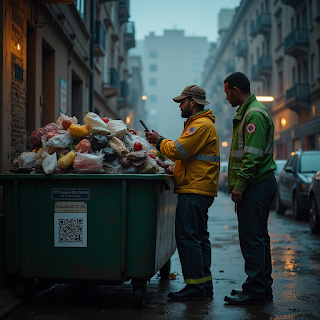Introduction to PPWR
The Packaging and Packaging Waste Regulation (PPWR) is a proposed European Union (EU) regulation aimed at reducing packaging waste, increasing recyclability, and promoting sustainability in packaging. It replaces the Packaging and Packaging Waste Directive (PPWD) and introduces stricter requirements for businesses operating in the EU market.
This regulation is part of the EU’s broader Circular Economy Action Plan and supports the European Green Deal, which seeks to make Europe climate-neutral by 2050.
Key Objectives of PPWR
The PPWR focuses on:
✅ Reducing Packaging Waste – Limiting excessive and unnecessary packaging
✅ Enhancing Recyclability – Ensuring all packaging is recyclable by 2030
✅ Promoting Reusable Packaging – Setting minimum reuse and refill targets
✅ Reducing Harmful Materials – Restricting certain single-use plastics and non-recyclable components
✅ Harmonizing EU Packaging Laws – Creating uniform standards across member states
Who Needs to Comply with PPWR?
The PPWR applies to all businesses involved in packaging production, distribution, and usage, including:
- Manufacturers – Companies producing packaging materials and containers
- Retailers & E-commerce Platforms – Businesses selling packaged goods
- Importers & Exporters – Companies bringing packaged goods into or out of the EU
- Logistics & Fulfillment Providers – Businesses using packaging for shipments
📌 Important: Even non-EU businesses selling to EU customers must comply with PPWR requirements.
Key PPWR Compliance Requirements
1. Packaging Reduction Targets
PPWR sets strict targets to minimize packaging waste:
- 5% reduction by 2030
- 10% reduction by 2035
- 15% reduction by 2040
Businesses must optimize packaging design to eliminate excess materials.
2. Recyclability & Material Restrictions
By 2030, all packaging must be fully recyclable, meaning:
✅ No non-recyclable plastics
✅ Clear labeling for correct disposal
✅ Elimination of unnecessary composite materials
🚨 Non-recyclable packaging will be phased out!
3. Mandatory Reuse & Refill Targets
To promote reuse systems, PPWR sets minimum requirements for:
- Beverage bottles & takeaway containers
- E-commerce shipping packaging
- Household & industrial packaging
📌 Retailers must provide refillable packaging options to customers.
4. New Labeling & Traceability Rules
All packaging must have:
✔ Standardized recycling labels across EU countries
✔ QR codes or digital markers for waste tracking
✔ Clear instructions on how to dispose of packaging properly
Consequences of Non-Compliance
❌ Fines & Penalties – Violators may face significant financial penalties
❌ Restricted Market Access – Non-compliant products may be banned from the EU market
❌ Brand Reputation Damage – Non-compliance can lead to negative consumer perception
💡 Businesses must act now to align with PPWR requirements before full enforcement.
Steps to Achieve PPWR Compliance
✔ Step 1: Conduct a Packaging Audit – Identify non-compliant packaging materials
✔ Step 2: Redesign Packaging – Use recyclable and sustainable materials
✔ Step 3: Implement Reuse & Refill Systems – Develop reusable packaging solutions
✔ Step 4: Update Labeling & Documentation – Ensure packaging follows new EU labeling standards
✔ Step 5: Partner with Sustainable Suppliers – Work with vendors that meet PPWR requirements
Conclusion
PPWR is a game-changer for packaging regulations in the EU, pushing businesses toward sustainability, waste reduction, and recyclability. Companies that proactively adapt will gain a competitive advantage while ensuring legal compliance.
🌍 Future-proof your packaging strategy by aligning with PPWR today!
.%20The%20scene%20includes%20susta.webp)









No comments:
Post a Comment